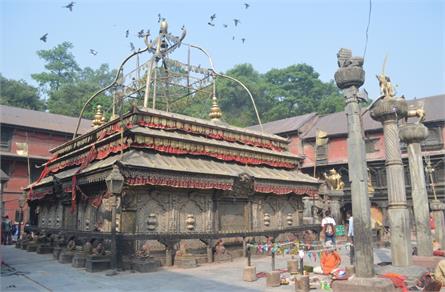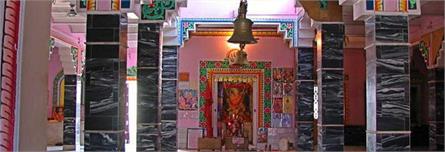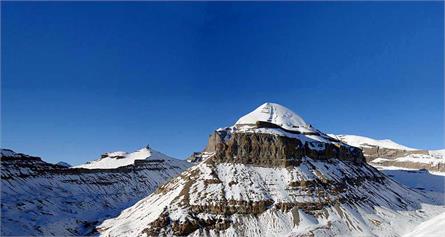Muktinath Temple - History, information & Temple timings
Gandaki Shakti Peeth is considered one of the 51 Shakti Peethas famous in Hinduism, known as "Muktadayan" or "Muktinath Temple." This Shaktipeeth is located at the origin of the Gandaki River in Nepal.
According to the Puranas in Hinduism, wherever the body parts or ornaments of the goddess Sati fell, the sacred place became Shaktipeeth. These Shakti Peethas are called holy shrines, which are spread throughout the Indian subcontinent. Devipurana describes 51 Shakti Peethas.
Also Read: The Divine Power of 12 Jyotirlinga
History
Gandaki Shakti Peeth is one of the 51 Shakti Peethas. As per the legend, King Daksha, father-in-law of Lord Shiva, organized a yajna, in which King Daksha did not invite Lord Shiva and his daughter Sati because he did not consider Lord Shiva as his equal. Mother Sati found it insulting and went to his father's place to question him about this affront. After reaching there, King Daksha said offensive words against Lord Shiva, which outraged her, and she jumped into the Havan Kund. When came to know, Lord Shankar reached there and took out the body of Mata Sati from Havan Kund and started doing Tandava, which caused upheaval in the entire universe. To save the whole world from this crisis, Lord Vishnu divided the body into 51 parts with his Sudarshan Chakra, the organs/ornaments where they fell became the Shakti Peethas.
The "head" of Mata Sati fell in the Gandaki Shakti Peeth. Here Mata Sati is known as 'Gandaki Chandi' and Lord Shiva as 'Chakrapani.'
Also Read: The Mesmerizing Natural Hot Springs At Manikaran Sahib
Architecture
Hindu Vaishnavas consider the central Shrine of Sri Muktinath, known as one of the eight most sacred shrines, names with Svayam Vyakta Kshetras. Srirangam, Srimushnam, Tirupati, Naimisharanya, Thothadri, Pushkar, & Badrinath are seven others. The temple is small in size but adorable.
The temple's unique thing is the 108 bull faces on the outer courtyard of the temple through which water is poured. The divine water flow in 108 pipes around the temple complex indicates the holy Pshkarini water from the 108 Sri Vaishnava Divya Desams. Devotees take sacred bath here even in freezing temperatures.
Religious Significance
Muktinath is one of the most significant temples of the Vaishnava sect. This pilgrimage center is famous for the god Shaligram. Shaligram is a sacred stone which is considered revered in Hinduism. It is mainly found in the Kali Gandaki River flowing towards Nepal. Traditionally, Lord Vishnu is worshiped as Shaligram Shila or Shaligram stone. This stone was formed from a fossil of insects found in prehistoric times, mainly in the Tethys Sea; there is now the Himalayan Mountains.
Also Read: The Mystry of Kamrunag Temple
Mythology
There is a profound mythological belief that Lord Vishnu resides in the Shaligrama rock. Many fictitious stories are also prevalent in this regard. According to one of these legends, Lord Vishnu helped Lord Shiva when he could not win the battle against the demon named Jalandhar. The story states that no one could defeat Jalandhar as long as the devil Jalandhar's wife, Vrinda, saved his integrity. In such a situation, Lord Vishnu, taking the form of Jalandhar, succeeded in destroying Vrinda's essence.
Curse of Lord Vishnu
By the time Vrinda realized this, it was too late. Unhappy with this, Vrinda cursed Lord Vishnu to lead a life as insects, which eventually led to the construction of the Shaligram stone, which is revered in Hinduism. According to old legends, Muktikshetra is the place where salvation is attained. It is here that Lord Vishnu resides in the Shaligram stone. Muktinath is also an essential place for Buddhists.
Best Time to Visit
If someone is planning to visit Muktinath Temple, don't expect a trip between June to August, as Monsoon will spoil your trip. However, either you can plan a trip from March to May or September to October.
Travel Essentials
The route of the journey is quite tricky. Therefore, it is advisable to carry essential luggage along, such as blankets, torches, warm clothes, watches, rainwear, sunglasses, vaseline, and first-aid kits, and gloves.
Other places to see around
- Jwala Mai
- Pashupatinath Temple
- Jomsom, Nepal
- Pokhara
- Janaki Mandir
- Guhyeshwari Temple
- Tatopani
- Tilicho Lake
- Sarangkot













